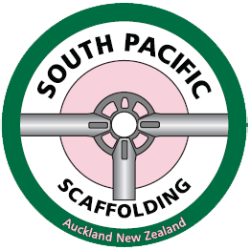An important element in a construction project for ensuring safety is the proper use of scaffolding. However, scaffolding has the potential to be a double edged sword as without correct procedures being followed, buying or renting scaffolding can exacerbate the hazards associated with working from heights that they are supposed to mitigate. Because of this, it is important that the correct inspections are carried out to ensure that the use of scaffolding is being done safely.
Pre Handover Inspection
It is crucial that all scaffolds are checked by a competent person prior to handover. If a scaffold is deemed as notifiable, this inspection must be carried by a person holding an appropriate certificate of competence.
Once this pre handover inspection has been completed, instructions for daily tests need to be provided for suspended scaffolding. These tests need to be performed consistently, and regular inspections need to take place to ensure they are still compliant. It is important that records of these inspections are kept.
Before sending scaffolding to its next location, the components of the scaffolding need to be inspected.
Pre-start Checks and Daily Inspections
Every day before work on the scaffolding commences, a pre-start check needs to take place. A competent person is required to conduct a visual check and load test.
Scaffolding inspections Frequency
Full inspections need to be carried out weekly while in use. This can be reduced to monthly only in the case that the scaffolding is set up but not in use.
In the event that there has been any structural alteration, repair, addition or change of anchorage, an inspection is needed to be carried out. This also applies to the event in which the scaffolding is exposed to a storm or any other event that may affect the safety of the scaffold.
In almost every situation, these checks need to be carried out by a certified scaffolding professional.
Component Inspection
Each individual component of the scaffolding systems has different requirements when performing an inspection
-
Supporting structure/ foundation:
This needs to be checked to make sure that it is capable of supporting the imposed loads.
-
General structure:
Ensure that all components of the structure are present and have not been removed.
-
Standards:
Ensure that these are correctly aligned and properly supported at their bases.
-
Ledgers, transoms and putlogs:
Make sure that there is no undue deflection
-
Ties and braces:
Ensure that they are all in place and are effective in stabilising the structure
-
Couplers:
All couplers need to be tightened properly
-
Working platforms:
Ensure that all working platforms are free from trip hazards and have no gaps larger than 50mm. It is also important to allow a minimum 450mm clear access past stacked materials and obstructions
-
Planks:
All planks need to be checked to make sure that they are not damaged and properly supported
-
Guardrails and toeboards:
Make sure these are secured and in place
-
Stairs and ladders:
All stairs and ladders need to be in good condition while being properly supported and secured
-
Gates and hatches:
Ensure that these are in place and opening correctly
Inspection Records
It is crucial to keep a record of all inspections. These records need to be recorded and signed by the person who conducted the inspection. These records can be a checklist illustrating their main findings and comments.
This inspection register needs to be kept on site.
South Pacific Scaffolding Priorities Safety on the Work Site
Following strict procedures and performing regular inspection on your scaffolding is a sure fire way of ensuring the health and safety of anyone on a worksite. South Pacific Scaffolding has a stellar safety record, and part of that reason is our meticulous attention to detail in regards to inspecting, maintaining and erecting scaffolding. When it comes to safety, there are no shortcuts. Let our experienced team ensure that your scaffolding is compliant with New Zealand law. The efficiency that comes with experts looking after your scaffolding ensures that your construction project moves along smoothly without any hiccups. For more information on the range of scaffolding services offered by South Pacific Scaffolding, get in contact with our team today!

